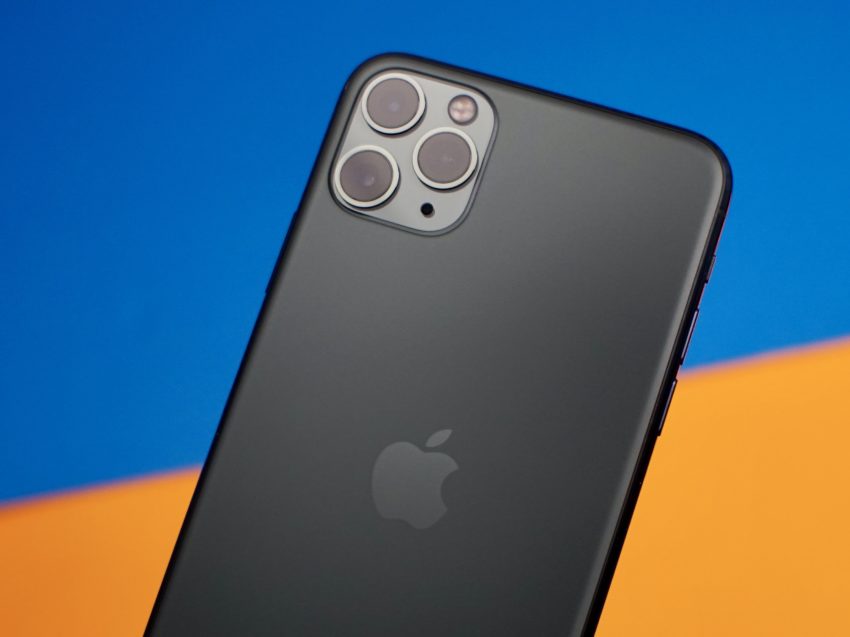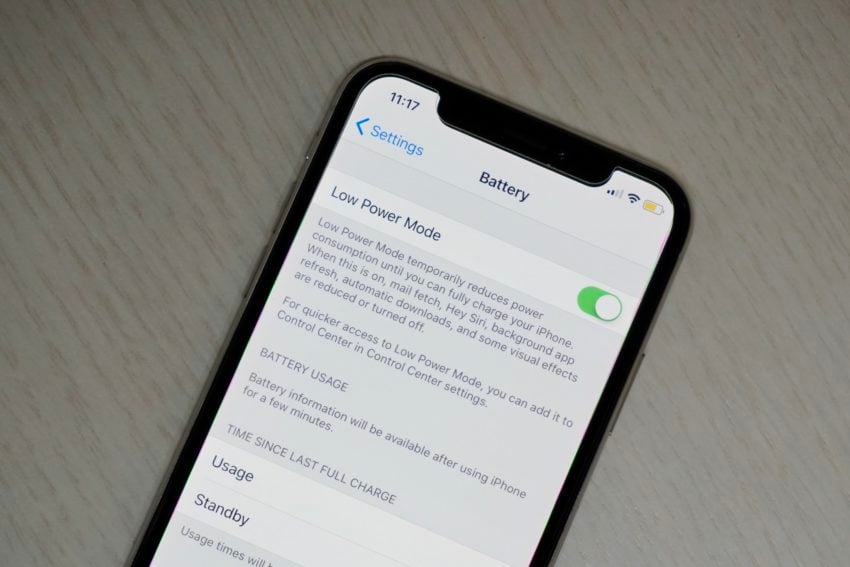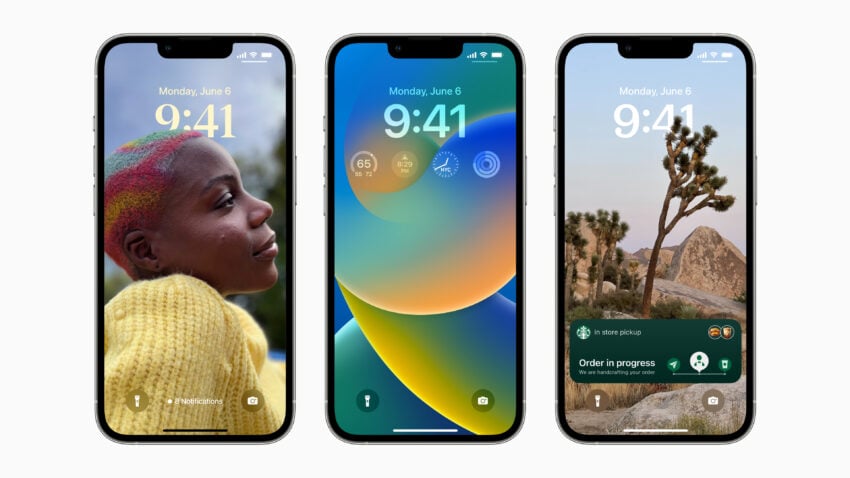How to Fix Bad iPhone 11 Battery Life is a post by Adam Mills from Gotta Be Mobile.
Some iPhone 11, iPhone 11 Pro, and iPhone 11 Pro Max users have run into severe battery drain. Battery life issues can be tricky to fix, but there are some things you should try before downgrading your phone’s software or getting in touch with Apple customer support.
As we push into the new year we’re still getting feedback from iPhone 11 users. A lot of it has been great and many people are enjoying the performance they’re getting out of the company’s former flagship models. That said, we’re also hearing about issues some iPhone 11 users are facing.
We’ve seen complaints about a variety of issues ranging from scratched screens to Wi-Fi issues to problems with first-party apps. We’ve also seen complaints about abnormal battery drain.
Battery life issues are extremely common, particularly after Apple releases new iOS software, so these complaints don’t come as much of a surprise.
Some of these issues might be hardware related, but most are probably related to the iOS software that currently powers these phones.
If you’re seeing horrible battery drain your first instinct might be to get in contact with Apple customer service. That’s an option, but you should try fixing the issue on your own before contacting Apple or your carrier.
In this guide we’ll take you through some fixes that might help you fix bad iPhone 11 battery life. These are fixes that have worked for us over the years and they might help you solve your battery issues in minutes.
Restart Your Phone
If you start noticing weird battery drain try restarting your iPhone. Power it down, wait for a minute, and then power it back on. This typically works wonders, especially if your device hasn’t been powered down in awhile.
Update Your Phone
If you’re running old iOS software, try updating your phone to the latest version of iOS 16.

Apple typically doesn’t call out battery life fixes in its software update change logs, but installing new software could help stabilize your iPhone 11’s performance.
Before you install a new version of iOS on your phone, make sure you read reviews and dig into feedback about its overall performance.
Check Your Apps
Often times it’s a rogue app causing the battery drain. Apps, particularly third-party applications, will sometimes act up after Apple releases new iOS firmware.
Fortunately checking on an app’s performance is extremely easy on the iPhone 11 and you should be able to single out the culprit in a matter of minutes. Here’s what you need to do:
- First, go to the Settings app.
- Tap on Battery.
- Check your battery usage.
In this menu you can see the apps eating up your iPhone 11’s battery life and when they’re doing so. If you use an app a lot, it will obviously put a strain on your device’s battery. However, if it’s draining a ton of battery or an app you rarely use is sucking up a lot of power, you’ll want to investigate further.
If you notice an issue, try updating the application to the latest version. App developers are rolling out support updates and new firmware could work wonders.
If updating doesn’t work, try deleting (permanently or temporarily) the app and see if things return to normal. If the issue persists, get in contact with the developer.
Reset All Settings
If your apps aren’t the root of the issue, try resetting all of your settings. This will restore your settings to their factory defaults (so make sure you have your Wi-Fi passwords handy), but it could iron out your battery life issues. It has worked for us in the past.
Here’s how to reset your iPhone’s settings:
- Go to Settings.
- Tap General.
- Tap Transfer or Reset iPhone.
- Tap Reset.
- Tap Reset All Settings.
- Enter your passcode if you have one enabled.
Use Screen Time
Your iPhone 11 comes with an extremely useful Screen Time feature that could help you conserve battery life while eliminating bad habits.
Screen Time provides you with a set of controls that can help keep your addictive behavior in check. If you aren’t on your phone using your apps, you won’t be chewing through its battery life.
The feature lets you set limits on how long you can use a particular app on a given day. If you approach the threshold, it’ll warn you.
You can also set alerts for kids and link them to a ScreenTime Allowance. This allows you to set limits on games, but keep important apps available to use.
Use Low Power Mode
Your iPhone 11 also has a Low Power Mode feature that will help you conserve battery life by temporarily shutting off background activity (Hey Siri, automatic downloads, and mail fetch).
You can flip Low Power Mode on and off whenever you want. Your iPhone will also prompt you to turn it on whenever it reaches 20% battery.

We recommend adding Low Power Mode to Control Center (Control Center is the menu that pops up when you swipe up from the top right of the screen) for easy access. Here’s how you do that:
- Head into the Settings app.
- Tap Control Center.
- Tap the green plus sign next to Low Power Mode.
The next time you open up Control Center on your device you’ll see a battery icon and you can tap it to enable or disable Low Power Mode.
If you’d rather turn Low Power Mode on via your Settings you can do that too. Here’s how to do it:
- Go to the Settings app.
- Tap on Battery.
- Tap on Low Power Mode.
- Toggle it On.
Turn On Optimized Battery Charging
The iPhone 11’s software includes a feature called “Optimized Battery Charging” which will help reduce battery aging.
This feature learns from your daily charging routine and waits to finish charging your iPhone 11/iPhone 11 Pro/iPhone 11 Pro Max to 100% until you need to use it. This will prevent your battery from sitting at maximum capacity and could extend the overall life of your device’s battery.
To turn it on:
- Head into your Settings.
- Tap Battery.
- Tap Battery Health and toggle Optimized Battery Charging on.
Turn Off Raise to Wake
The iPhone 11’s Raise to Wake feature can be handy, but turning it off could help you conserve battery.
If you don’t need your device’s screen to automatically turn on whenever you pickup it up:
- Go into the Settings app.
- Tap Display & Brightness.
- Turn the Raise to Wake function off.
Stop Background Refresh
The iPhone 11’s Background App Refresh feature refreshes apps in the background in order to show you the latest data when you open them. It can be useful, but it can also suck up battery life. If you don’t need it working in the background, try turning it off.
To disable Background App Refresh you’ll need to:
- Go into Settings.
- Tap General.
- Tap Background App Refresh.
- Turn it off for any applications you don’t use.
You can also turn it completely off if you don’t want to go through your apps one at a time.
Turn Off Fitness Tracking
Your phone has a co-processor that tracks your steps and other movements. If you use your phone for fitness-related activities, you should keep this feature on. If you don’t, try turning it off because it could help you conserve battery.
To do this
- Head into your Settings app.
- Tap on Privacy & Security.
- Select Motion & Fitness.
- Toggle the Fitness Tracking function off.
You also might want to toggle off apps listed below Fitness Tracking in the menu.
Turn Off Assistive Touch
If you’re currently using Assistive Touch on your device, it might be one of the reasons your battery is draining quickly.
If you don’t want or need Assistive Touch active on your phone, try turning it off:
- Go into Settings.
- Tap Accessibility.
- Tap Touch.
- Toggle AssistiveTouch to off.
Downgrade Your iPhone 11
If you can’t fix the issue yourself, can’t wait Apple’s next iOS 16 update, you can try downgrading back to a previous version of iOS 16.
If you were getting good battery life on an older version of iOS 16, downgrading might help. If you don’t know how to downgrade an iPhone, take a look at our walkthrough.
Restore as New
You also might try restoring your device from a backup from your computer or via iCloud.
If you’re feeling really ambitious, you can try restoring the device as new. You can do this via Finder, iTunes or iCloud.
Install iOS 16.2 for Better Security |
||||||||||||||||
 |
||||||||||||||||
|
If security is important to you, think about installing Apple's iOS 16.2 update right away. iOS 16.2 brings a ton of important security patches with it and you can dig into the details on Apple's security site. The update also brings end-to-end encryption to iCloud, iMessage, iPhone backups, Notes, Photos, and more. If you want to learn more about it, head over to Apple's guide. If you decided to hold off on installing iOS 16.1.2, you'll get its solitary security patch with your upgrade. Learn more about it right here. If you skipped iOS 16.1.1, you'll get its security patches when you upgrade. You can learn more about them right here. If you missed the iOS 16.1 update, it brought 19 security patches to the iPhone and you can learn about the particulars of those over on Apple's website. If you failed to download iOS 16.0.3, it had one security patch on board, a fix for a potential exploit within the Mail app. For more about the fix, check out Apple's security site. If you're still running iOS 15 your iPhone, you'll get a bunch of other patches when you upgrade. iOS 16.0 brought a ton of security patches to the iPhone. If you're interested in the exact nature of these improvements, you can read about them over on Apple's security website. In addition to those patches, iOS 16 brings some additional enhancements to privacy and security including Safety Check which, according to Apple, will help "people in domestic or intimate partner violence situations review and reset the access they’ve granted others." The feature also resets system privacy permissions for apps and restricts Messages and FaceTime to the device on hand. Apple's also made some improvements to Passkeys in Safari. iOS 16 brings a brand new sign-in method that's end-to-end encrypted and safe from phishing and data leaks. |
||||||||||||||||
|
||||||||||||||||
How to Fix Bad iPhone 11 Battery Life is a post by Adam Mills from Gotta Be Mobile.















0 Commentaires